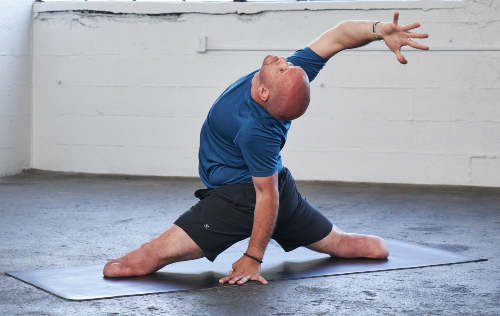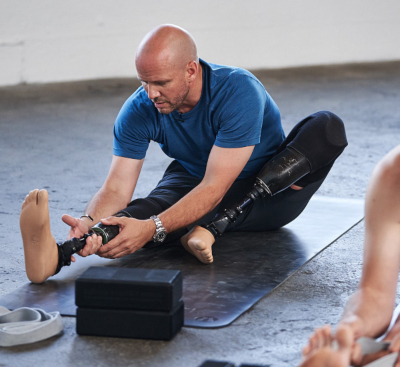How Trauma-Informed Yoga Can Reduce Fight-or-Flight in Warriors

Exposure to traumatic combat and operational experiences affects veterans spiritually, psychologically, biologically, and socially. In 2018, the U.S. Department of Veteran Affairs (VA) treated more than 1.7 million veterans for mental health issues, including combat stress, depression, and PTSD.
PTSD is a mental health condition that can happen to anyone who has experienced a traumatic event, leaving them to cope with situational or emotional triggers that are tied to the memory of the traumatic event. The VA’s National Center for PTSD reports that about 11% to 20% of veterans who served in Operations Iraqi or Enduring Freedom experience PTSD in a given year.
“Now, more than ever, wounded warriors are taking control of their mental well-being through physical activities,” said Dan Nevins, Wounded Warrior Project® (WWP) warrior and yoga teacher. “Yoga’s emphasis on bridging mind and body connections can empower warriors in their recoveries. Traditional yoga requires a level of trust and openness for full-body expression, but some warriors coping with invisible wounds may feel apprehensive, fearing reactivation of triggers linked to a traumatic event.”
Research shows trauma-informed yoga (TIY) can be beneficial for warriors who suffer from trauma-related symptoms. TIY uses practices and techniques specifically adapted to reduce the heightened fight-or-flight system of someone coping with PTSD, creating a more relaxed and safer environment. Such an environment allows warriors to learn how to respond to their unique injuries rather than react to their triggers, thus improving opportunities for more focused recovery.
In traditional yoga practice, certified teachers direct poses using intentional verbal cues. They often assist with achieving proper form through touch. However, physical interactions — specifically touching to reposition — can increase activity in an already heightened nervous system. Instead, TIY teachers invite wounded warriors to move within their personal comfort levels — mentally and physically. Because TIY teachers do not move around the room, the intrusion on personal space is eliminated. In addition, TIY is sensitive to yoga-poses knowing that certain movement sequences can also trigger trauma symptoms.

“Wounded warriors can choose from a variety of different yoga styles best suited to their personal recovery plan, including trauma-informed yoga,” Dan said. “Wounded Warrior Project works with several organizations, such as the Baptiste Foundation, to connect warriors to the best programs and services for a healthy recovery.”
Several WWP programs incorporate yoga as a tool for stress management, emotional self-regulation, and physical wellness. Learn more about WWP’s physical wellness programs here.
Contact: Vesta M. Anderson — Public Relations, vanderson@woundedwarriorproject.org, 904.570.0771
About Wounded Warrior Project
Since 2003, Wounded Warrior Project® (WWP) has been meeting the growing needs of warriors, their families, and caregivers — helping them achieve their highest ambition. Learn more.